Imagine this scenario: You’re an expert eye care provider, focused on keeping your patients’ eyes healthy and vision clear. Part of that responsibility involves regular intraocular pressure readings, for which a tonometer is your go-to device. Now, imagine overlooking a seemingly small detail – the tonometer’s tip cover. This unsung hero in eye treatment routines can greatly impact the hygiene, accuracy, and ultimately the well-being of your patients. Yet, its importance is often underestimated. In this article, we’ll delve into why the quality of tonometer tip covers truly matters. Buckle up, and prepare to give some much-deserved attention to these overlooked workhorses of the optometry world.
“In every field of medicine, the smallest details can make the mightiest impact. In the realm of optometry, tonometer tip covers are one such detail.”
Whether you’re a seasoned optometrist or an eye care novice, this detailed exploration will undoubtedly enlighten you about the critical role these tiny components play in your practice’s success.
When it comes to maintaining a healthy vision, regular IOP (intraocular pressure) checks are crucial. Any upward spike in pressure could lead to severe conditions like glaucoma. For the uninitiated, glaucoma is a grave condition that can cause irreversible vision loss if left unaddressed. So, how exactly does your eye care professional check your IOP levels? The answer to that question is through the use of a specialized device known as a tonometer.
However, when utilizing a tonometer, it’s not just about the device itself – the tonometer tip covers also play a migratory role. We’ll disclose why these small yet essential components are critical in the coming paragraphs.
The tonometer prism, which is responsible for reading IOP, can quickly become a breeding ground for microbes if left uncovered. Furthermore, harmful diseases such as adenovirus keratoconjunctivitis, notorious for its persistency, can easily be transmitted between patients via an uncovered tonometer prism. And here’s where the magic of tonometer tip covers comes into play.
The tip cover acts as a physical barrier, preventing direct contact between the prism and the patient’s ocular surface. By stopping this direct contact, we effectively minimize potential cross-infection. However, using the tonometer tip cover is not as simple as it seems. It must be positioned correctly to ensure an effective seal, and it must be disposed of properly after use to mitigate the risk of spreading infections.
Now, let’s turn our attention to another issue – the integrity of the tonometer prism. Cracks and other forms of damage in the tip can not only cause discomfort to the patient by irritating the cornea but also present an opportunity for microbes and disinfectants to penetrate the tonometer’s interior. The regular examination of tonometer prisms for signs of wear and tear is therefore of the utmost importance.
Regular inspection of tonometer prisms becomes essential as risks associated with damaged tonometer tips are not insignificant. These include potential irritation to the patient’s cornea, a breeding ground for harmful microbes, and penetration of disinfectants into the tonometer’s interior. Imagine, an instrument intended to measure ocular pressure now instead causing discomfort or, worse, contributing to an eye infection due to a cracked tip. Even the disinfectant, supposed to clean the instrument, can compound the problem since it may fuel these cracks when absorbed into the tip. Moreover, this can lead to the tip swelling and subsequently dissolving the glue that holds the hollow tip together. An interesting fact — the tonometer pens themselves are latex-free, but the same can’t always be said about their tip covers. Without a latex-free cover, some patients might experience an allergic reaction, raising yet another concern.
Disinfectants often interact unfavorably with tonometer tips. A casual cleaning routine might induce more harm than good if not done consciously. Materials like sodium hypochlorite, 70% isopropyl alcohol, 3% hydrogen peroxide, and ethyl alcohol can significantly damage tonometer prisms. Moreover, water immersion, ultraviolet light, and heat exposure pose risks too.
As an eye care professional, ensuring the highest level of sanitation in your tonometry equipment means being conscious of even the smallest components – namely, tonometer tip covers. Many may underestimate their importance, but these tip covers play a crucial role in maintaining instrument hygiene and minimizing the risk of cross-contamination between patients.
“Ignoring the quality of tonometer tip covers is akin to neglecting the importance of cleanliness and hygiene in a medical setting. No amount of sterility in other areas can compensate for the potential hazards brought about by subpar tip covers.”
Standard tonometer tip covers are not always up to the task. To maintain optimal cleanliness, it becomes essential to invest in quality tonometer tip covers that are resilient and can stand up to repeated usage without compromise. They offer not just superior protection against bacteria and foreign bodies, but also a necessary peace of mind to both practitioner and patient that their safety is a top priority.
Next, let’s take a look at some compelling reasons why top-quality tonometer tip covers should be non-negotiable:
As we delve further into the world of tonometer tip covers, keep these factors in mind. Making the right choice isn’t just about passing health inspections, it’s about maintaining a high level of care, because your patients deserve it.
| Type | Features | Use Case |
|---|---|---|
| Bulk Bag Tonometer Tip Covers | Multiple covers included in one package, usually more cost-effective. | Ideal for busy practices and hospitals with high patient flow. |
| Individually Wrapped Tonometer Tip Covers | Each cover is separately packaged, ensuring maximum sterility. Usually more expensive. | Perfect for small clinics and mobile units that may not have immediate access to sterilization facilities. |
| Single-use Tonometer Tips | Designed for one-time use. Reduces the risk of cross-contamination and the need for disinfection. | Advisable for situations with a higher risk of infection, such as in treating patients with suspected prion disease. |
| Disposable Tonometer Covers | Designed to be used once and then discarded. Lower risk of carrying or transmitting microbial infections. | Suitable for all clinical settings to maintain patient safety and hygiene. |
Before delving deeper into why quality tonometer tip covers matter, it’s important to give you some context. A tonometer is a critical tool used by eye care professionals to measure the intraocular pressure (IOP), which is an essential step in assessing your risk for glaucoma. The tip of the tonometer comes in direct contact with the patient’s eye, leaving no room for compromises when it comes to sanitation and accuracy. This is where the intrinsic value of a quality tonometer tip cover comes into play.
You may ask, “Why does the quality of a tonometer tip cover matter so much?” The answer lies in utmost patient safety and tool efficiency. The right tip cover does not only protect your patients from cross-contamination but also ensures that the tonometer provides accurate readings every single time.
The tonometer tip cover acts as a protective barrier between the patient’s eye and the tonometer tip. Its purpose is twofold:
In short, the quality of a tonometer tip cover directly impacts the safety and wellbeing of patients, and the reliability of IOP measurements, thereby emphasizing its importance in eye care.
The first step is to ensure the seal of the tip cover is in the correct position. This ensures an optimum fitting that allows accurate measurements to be taken. After use, dispose of the tip cover properly to prevent cross-contamination.
Using a tonometer without a tip cover can expose patients to serious risks, such as eye infections or diseases. This is due to the direct contact between the tonometer and the patients’ ocular surfaces, increasing the chances of microbial transmission.
There are different types in the market; bulk bags and individually wrapped packages, catering to different user preferences and hygienic needs. Automated Ophthalmics, for instance, offers both types of tip covers compatible with popular tonometers like Tono-Pen and AccuPen.
Cracks in tonometer tips can harm the patient’s eye in multiple ways. They may irritate the cornea, harbor microbes, or even allow disinfectants to penetrate into the interior of the tonometer tip, all of which can pose severe risks to the patient’s ocular health.
Goldmann tonometry is regarded as the gold standard in ophthalmology due to its high precision and accuracy for intraocular pressure measurement. Its reliability makes it an indispensable tool in diagnosing conditions like glaucoma.
When it comes to ocular health, our discussion has clearly outlined the importance of quality tonometer tip covers. They play a crucial role in maintaining the accuracy of intraocular pressure measurements and ensuring patient safety by reducing the risk of cross-infections. Moreover, we’ve highlighted the potential damage and impact caused by the regular use of disinfectants on tonometer tips. The selection of appropriate tonometer tip covers, coupled with effective usage and maintenance, can significantly mitigate these issues.
By examining various types of tonometer tip covers and their applications, we’ve equipped you with the knowledge to make informed decisions tailored to your specific needs. The research and laboratory studies presented remind us that cost should not compromise the quality of our choices. It’s evident that not all tonometer tip covers are created equal, and their differences can affect your intraocular pressure (IOP) measurements, as shown in the statistical comparisons highlighted in Table 1.
While the Goldmann prism remains the gold standard in tonometry, innovations like Excursion tonometry are proving to be reliable alternatives. These advancements, as well as a continued emphasis on quality, will pave the way forward in accurately monitoring intraocular pressure, thereby safeguarding the vision of countless individuals. Remember, the lens through which you view the world deserves nothing less than the best care possible.
VISIT OUR SHOP
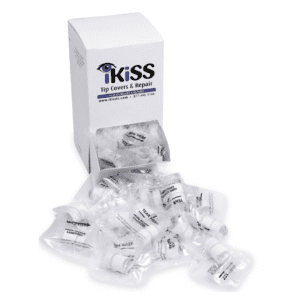
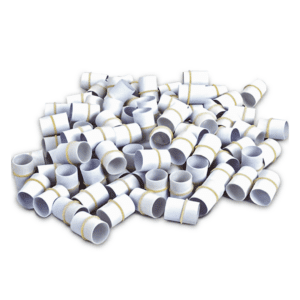
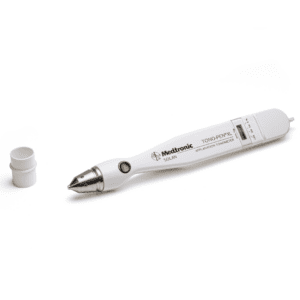
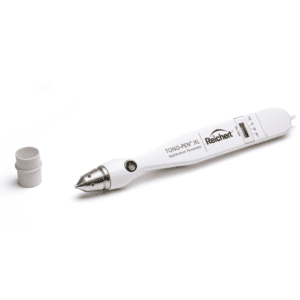
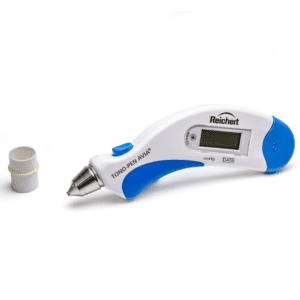
iKiSS is the go-to provider for top-quality refurbished Tono-Pen® Tonometers, Tono-Pen AVIA® Tonometers, Slit Lamps, and Phoropters, offering substantial savings of up to 40%.